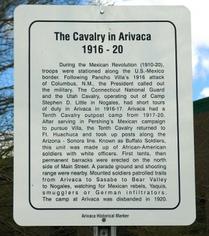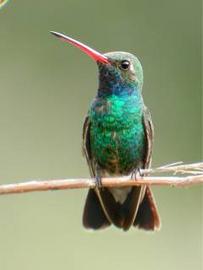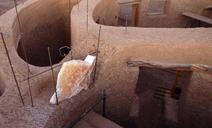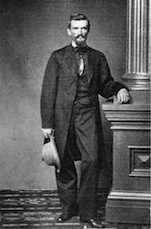ARIVACA, ARIZONA:
rich in history, natural beauty and friendly people
Arivaca is located 60 miles south of Tucson through some of the most stunning scenery in Arizona. Quaint and quirky,
the area is a geological, ecological and cultural treasure.
Surrounded by mountain ranges Arivaca is a birding hotspot with the Buenos Aires National Wildlife Refuge in the center of town. Arivaca Lake is six miles down Ruby Road, enroute to the ghost town of Ruby. Arivaca Creek and Mustang Trail provide hiking with abundant birds and wildlife.
At an elevation of 3,800', and positioned to capture weather
rolling in from the South and West the climate is cooler and wetter than Tucson with highs ranging up to 100 and lows into the teens. Rainfall ranges from 12-20 inches per year,
most of which occurs during the spectacular summer monsoons.
PEOPLE
With appx. 700 residents, Arivaca is home to a diverse and talented population that includes numerous descendants of area pioneer families. Many creative artistic ventures have evolved as well as numerous building and design explorations ranging from block making to bamboo and alpaca cultivation, to cob building.
First Saturdays (from October-May) provide another venue
for arts and crafts as well as themed special events. Year round,
produce from Arivaca’s certified organic Community Garden is available for sale at Marian’s Farmers’ Market every Saturday
from 9 a.m. until noon. Also available are a variety of other
food items including homemade tamales, artisanal goat cheese, and locally produced honey from Stockwell.
The Arivaca Connection newspaper keeps locals and friends updated on current activity and arrivals.
HISTORY OF THE AREA
(courtesy of Mary Noon Kasulaitis)
Early settlers are believed to be Pima or Tohono O'odham tribes. The first European rancher in the area was Antonio de Rivera in the 1740's, but the area was abandoned after the Pima Indian Revolt of 1751. The Sonora Exploring and Mining Company worked silver mines in the area until 1861. Meanwhile, in 1853, the Gadsden Purchase put Arivaca in the United States. Later, several ranchers came into the area but continuing challenges with the Apaches plagued residents. In 1870 development resumed. In 1878 a Post Office was established, and in 1879 Pedro Aguirre, who made Arivaca a stop on his stage line from Tucson to Altar, Sonora, Mexico in 1870, built the first schoolhouse in Arivaca at his own expense.
That same year, Dr. Adolphus Noon arrived from California and for the next 20 years gave medical aid to the residents, while also mining and raising cattle.
Arivaca became a town between 1876-1881 when a short-lived mining boom launched the area. The Arivaca Mining District encompassed the Guijas Mountains. By 1896, the population of Arivaca reached 236 people.
The railroad between Tucson and Nogales was completed in 1911 and Amado was the new passenger freight station. Mail was delivered to Arivaca via mule-drawn buckboard.
Automobiles arrived between 1912 and 1914 and in 1916 the Connecticut National Guard Cavalrymen arrived in Arivaca because of unrest in Nogales. They were stationed in Arivaca for a month. They were followed by several other Cavalry from 1917-1920 that set up barracks, a new well and pumping plant, and a telephone line connection with the Army Post in Amado.
The first major improvement of the Arivaca Road occurred in 1923 and was six miles of grading and draining between the Old Sopori Schoolhouse site and the Cerro Colorado Mine.
In 1938 the State Health Department investigated the mosquito problem in the valley after two cases of malaria were reported. Gambusia fish were planted in ponds and sloughs and have thrived. They continue to provide protection from mosquitoes to this day.
In 1953 Arivaca had a population of 66, and in 1956 the Trico Electric Cooperative power lines arrived in the valley. In 1972 the Arivaca Ranch sold 11,000 acres to a land developer who subdivided the property into 40-acre parcels. Four years later, the dirt Arivaca Road was paved.
In the 1980s and 1990s many new residents moved into the area, the result of available homesites and a new chronology of events that included the formation of a medical clinic, fire department, arts council, human resource office, community center and public library.
In the 2000s the tightening of border security brought a new era of highly visible enforcement not embraced with universal enthusiasm by area residents.
In 2012 the community celebrated the naming of the Arivaca Schoolhouse, the oldest standing schoolhouse in the state, to National Register of Historic Places. Locals banded together and repurposed a former nursing home into the Arivaca Action Center with a focus on education, the arts, wellness, hospitality and sustainability. The AAC offers space for meetings, overnight guests, gardening, and physical therapy.
Also in 2012, the humanitarian aid group No More Deaths opened an information center in the townsite staffed by volunteers.
Interested in learning more about us?
Pedro Aguirre
and wife Emma
Historical Marker in Arivaca








